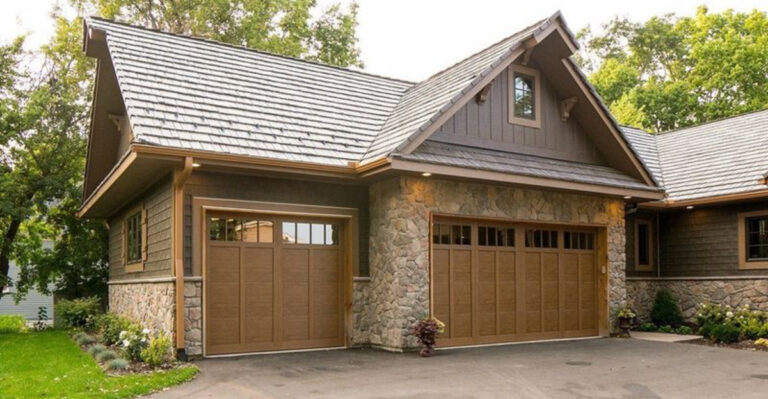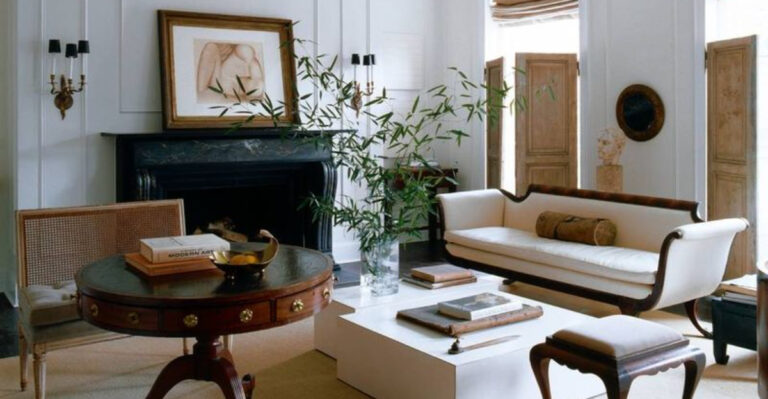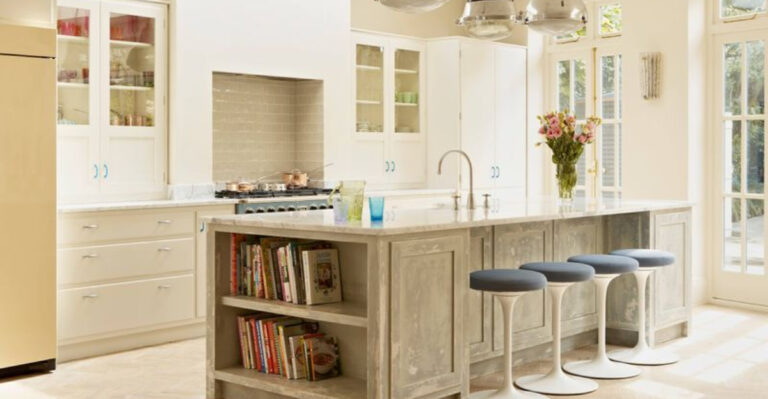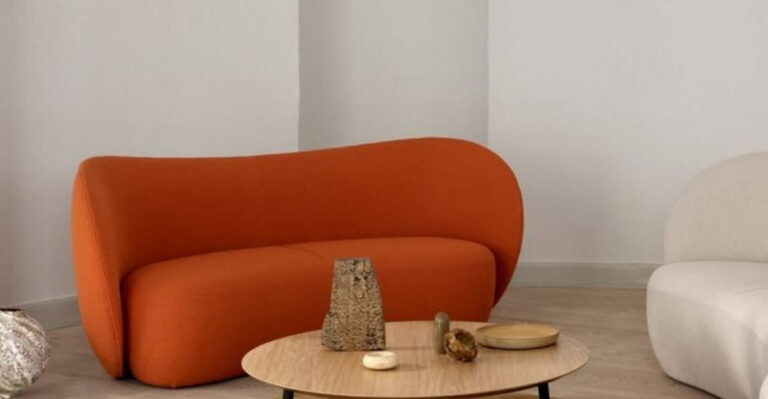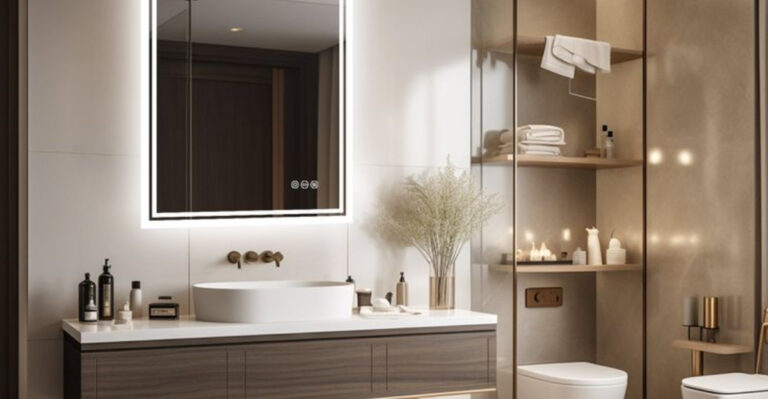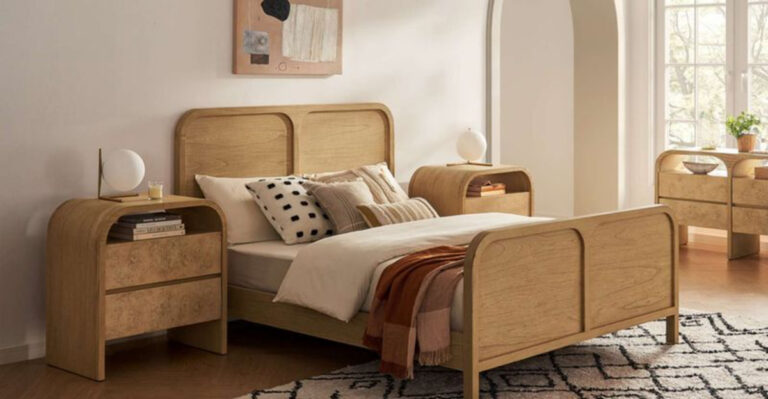29 Items Every Retiree Needs To Throw Out For A Clutter-Free Home
Retirement is the perfect time to simplify and embrace the joy of a clutter-free life. Trust me, I’ve found that after years of accumulating stuff, it’s easy to get buried under it all.
I recently discovered an entire shelf of mismatched coffee mugs, half of which were gifts I’d never used! As we age, keeping only what truly brings us joy becomes even more important.
So I’m sharing items you might want to toss to create a more peaceful, stress-free home. After all, less stuff means more room for living your best retired life!
1. Old tax documents

Piles of paperwork seem to breed in dark corners, especially those outdated tax documents. Bags and boxes store them, often untouched for years.
Yet, with digital storage options available, these paper trails are like relics of a bygone era. Shredding or scanning can free up valuable space, bringing some clarity.
Although keeping certain documents for legal reasons is necessary, most can be replaced with electronic files. The result is not only more room in the office, it’s a lighter mental load.
2. Expired medications

Medicine cabinets tend to become archives of health history, and expired medications are often left forgotten. These outdated pills and creams take up space and may not be safe to use.
Removing them ensures that only effective and necessary medications are within reach. Furthermore, proper disposal is vital to avoid any accidental misuse.
By cleaning out these relics, a healthier and more organized medicine cabinet emerges. This act of clearing clutter also allows room for what truly promotes well-being.
3. Worn-out clothes
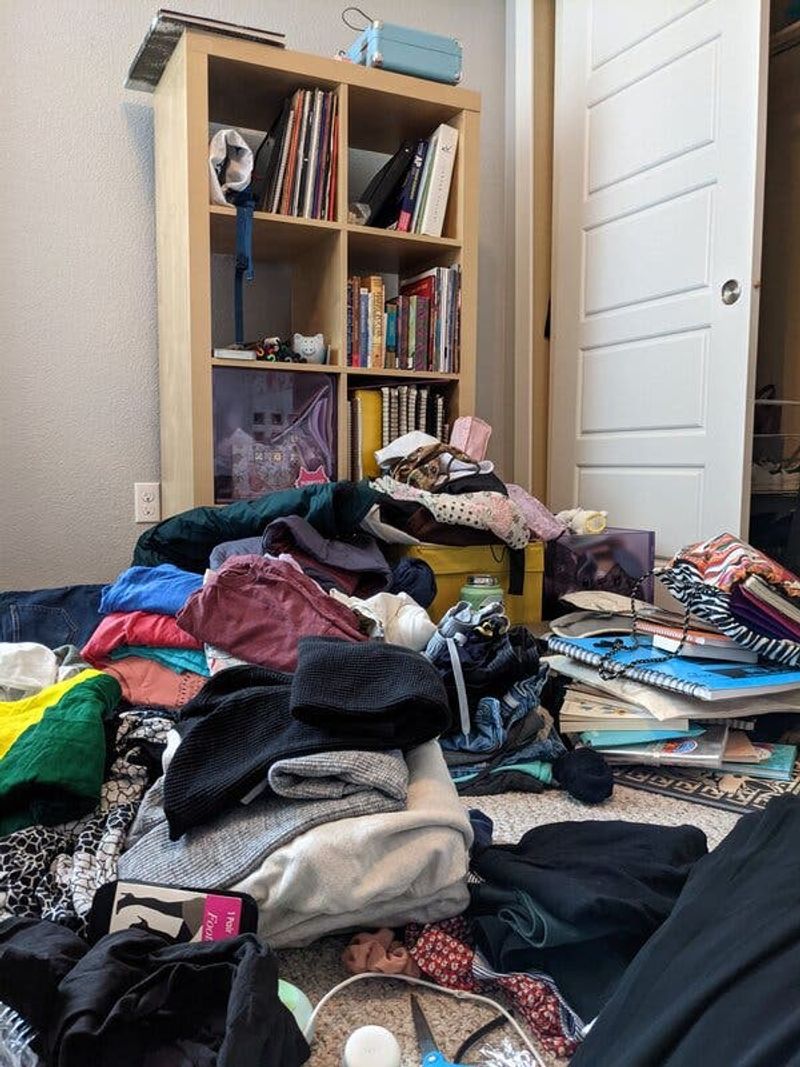
Closets tell stories of fashion choices past, yet not all tales need preserving. Those worn-out clothes, the ones seen better days, often linger.
Donating or recycling these garments creates space for new or more frequently worn apparel. This purge leads to a closet that reflects the current lifestyle and preferences.
While sentimental attachments can make it hard to part with certain pieces, the reward is a wardrobe that’s functional and fresh.
4. Broken appliances
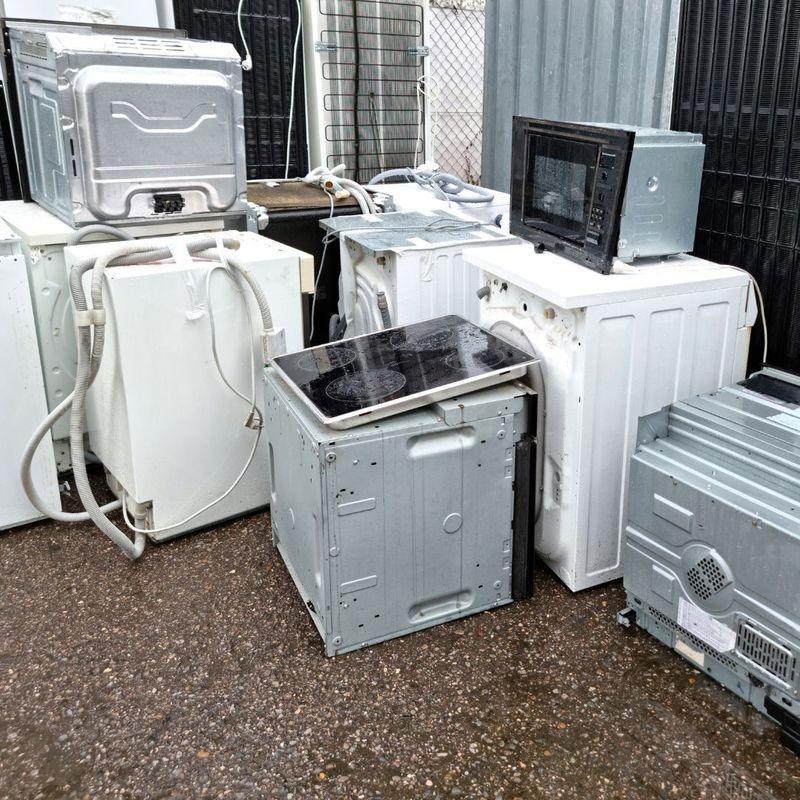
Kitchens often hide broken appliances behind cupboard doors and in forgotten corners. These gadgets are fondly remembered for their usefulness but now gather dust.
Repairing might be an option, yet if not feasible, let them go. Removing them clears valuable counter space and reduces the visual noise.
Finding replacements or realizing some appliances are no longer needed simplifies daily routines. The act of discarding becomes an opportunity for renewal.
5. Outdated electronics

They evolve rapidly, leaving behind a trail of outdated devices. These forgotten gadgets often end up in storage, taking up space and offering little value.
Recycling or donating them can benefit others and reduce clutter. While the nostalgia of old electronics might tempt us to keep them, freeing up space allows us to appreciate modern devices.
This transition from old to new often brings a sense of satisfaction and streamlines our technological ecosystem.
6. Unused kitchen gadgets

Drawers become gathering grounds for gadgets galore, many of which rarely see the light of day. These unused tools occupy space that could be better utilized.
By donating or selling them, we create a more functional cooking space. This process often reveals what’s truly essential in our culinary endeavors.
Removing the unnecessary allows focus on quality rather than quantity. It’s a step towards simplifying the kitchen which makes it a more enjoyable place to create and savor meals.
7. Duplicated items
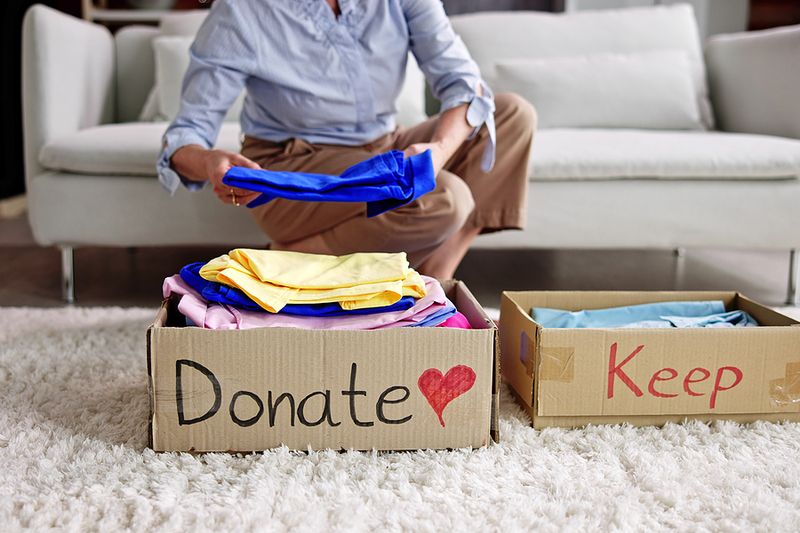
These repetitions rarely serve a purpose and can be easily overlooked. Identifying and removing them opens up space for what truly matters.
The process fosters mindfulness in our purchasing habits, encouraging us to think before acquiring new things.
By keeping only what’s necessary, we enjoy a more organized and efficient living environment. It’s about valuing quality over quantity and simplifying our lives.
8. Old magazines

Stacks of old magazines often become fixtures on coffee tables and shelves, rarely touched after the initial read. These periodicals quickly lose relevance, yet still take up valuable space.
Recycling them not only clears clutter but also refreshes the aesthetic of a room. This act can create an opportunity to explore digital subscriptions or borrow from libraries. It’s a fresh start for the curious mind.
9. Outdated manuals

Those thick manuals often accompany new gadgets but rarely prove useful in the long run. As technology evolves, these booklets quickly become obsolete.
Keeping them can be more of a nuisance than a help. Discarding them frees up storage and reduces paper clutter. In many cases, digital versions can be accessed online.
By recycling or disposing of them, you contribute to a cleaner and more organized home. It’s a small step towards embracing modernity and letting go of the unnecessary.
10. Excessive cleaning supplies
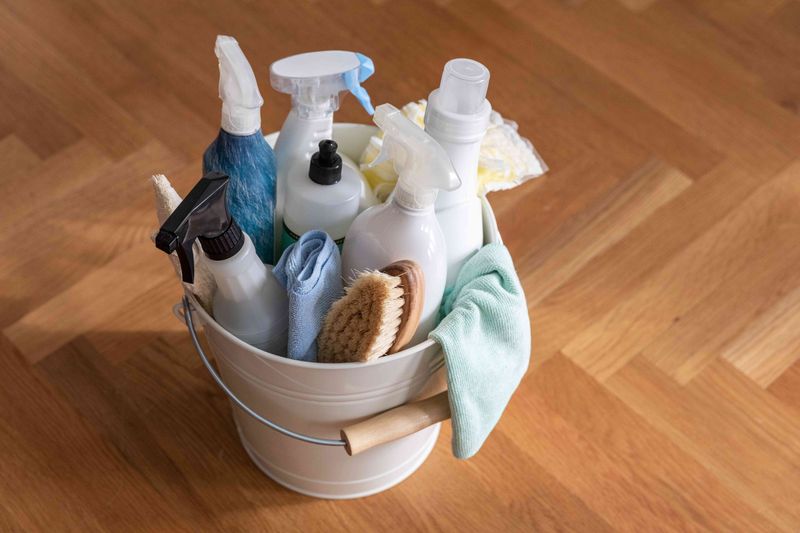
Cleaning supplies tend to multiply over time, filling up cabinets and closets. These products often go unused, taking up valuable storage space.
Streamlining the collection by keeping only the essentials can make cleaning more efficient. This reduction means less searching for the right product and more focus on getting things done.
Additionally, fewer chemicals in the home contribute to a healthier living environment. Simplifying this area of the home reflects a commitment to both cleanliness and order.
11. Old greeting cards
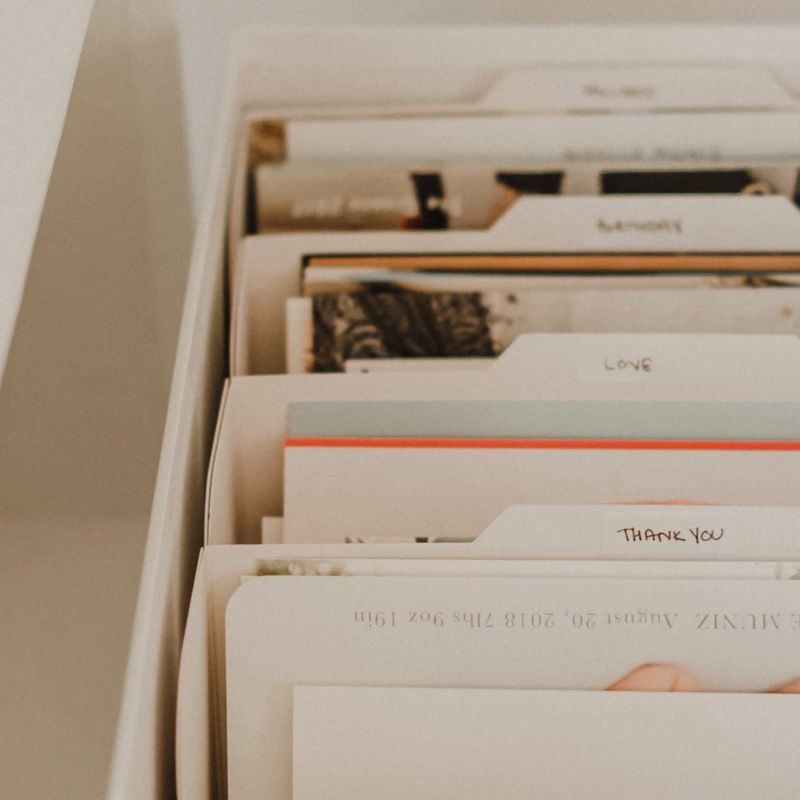
While sentimental, these cards can quickly become clutter. Selecting a few special ones to keep and recycling the rest can create more storage space and clarity.
This process encourages us to focus on the memories and relationships rather than the physical objects. By letting go, we cherish what truly matters and find a newfound simplicity in our mementos.
12. Mismatched socks
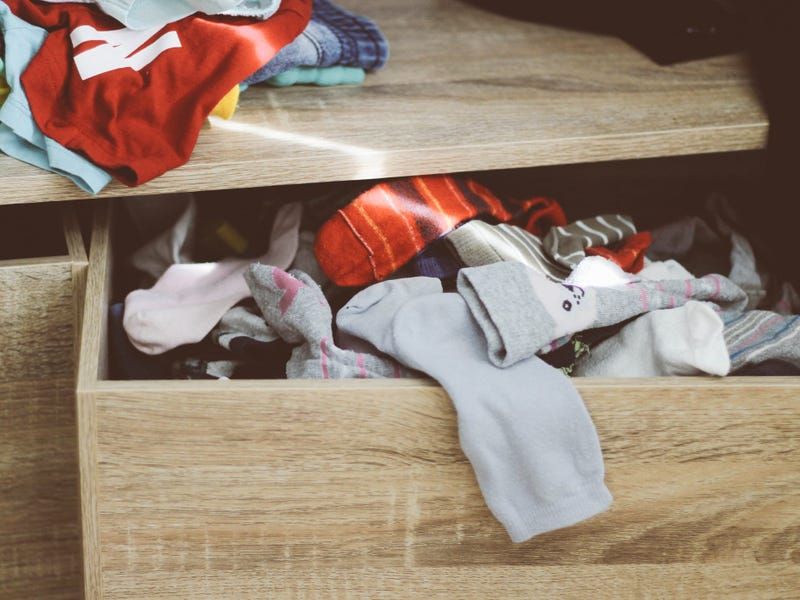
These mismatched or hole-ridden pairs often clutter drawers, making it hard to find a matching set. By sorting through and discarding them, we simplify our morning routines.
This act of tidying up offers a sense of accomplishment and creates more space for what we truly need.
Finding joy in an organized sock drawer translates into a more organized life as well. It’s a small victory in the battle against clutter.
13. Broken furniture
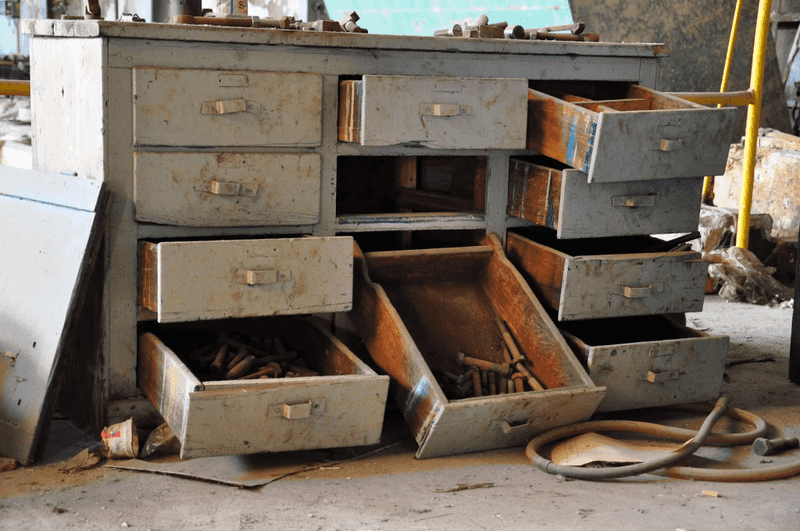
Furniture that’s seen better days often stays around longer than needed. These broken pieces take up space and can even pose a safety hazard.
Evaluating whether repair is feasible or if it’s time to let go can free up rooms and enhance overall living spaces. Discarding what’s beyond repair opens opportunities to find furniture that matches our current needs and aesthetics.
14. Worn-out shoes
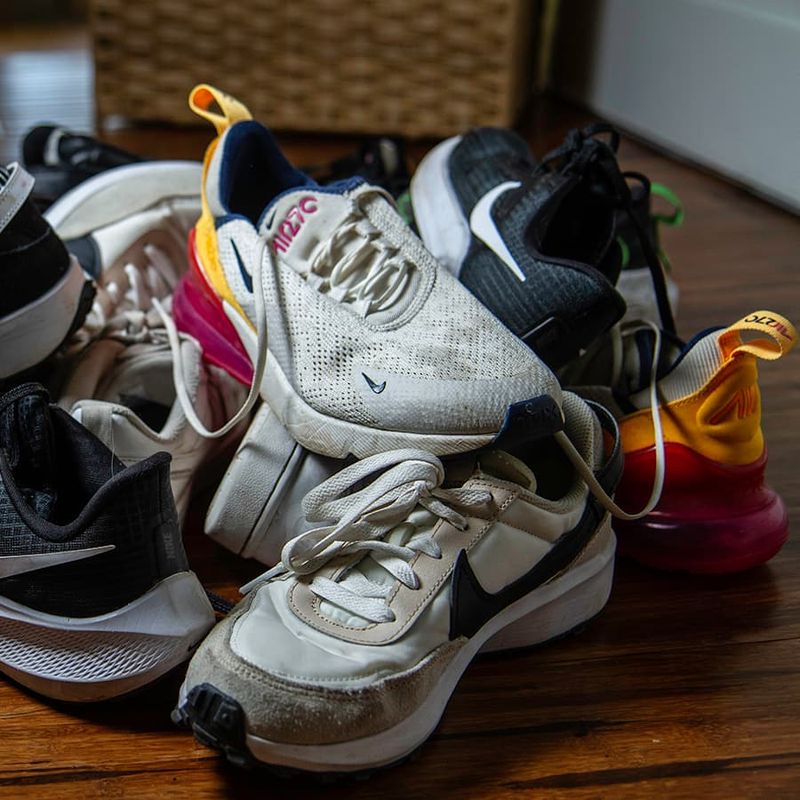
Shoes take us places, yet not all deserve a permanent spot in the closet. Worn-out pairs often linger longer than necessary, occupying space without offering comfort or style.
Clearing them out makes way for footwear that meets both needs. Whether donating or recycling, removing these shoes creates a more organized closet and simplifies daily choices.
Letting go of what’s past its prime allows us to embrace footwear that complements our lifestyle today. It’s a step towards a more functional wardrobe.
15. Tattered blankets
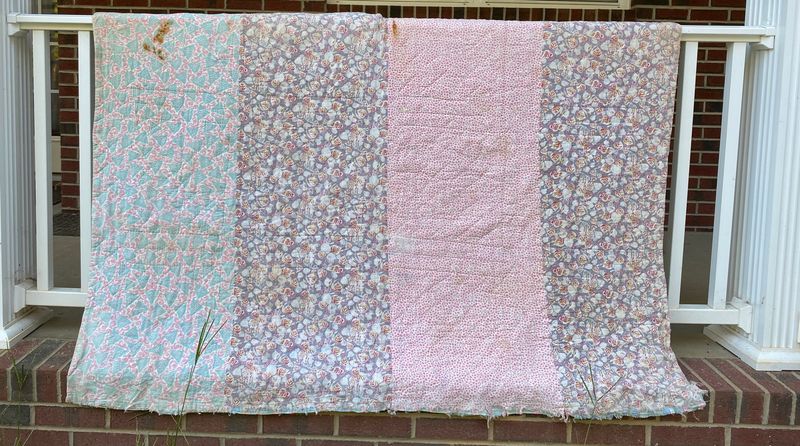
Blankets provide warmth, yet when they become tattered, they’re more of a nuisance than a comfort. These worn-out throws often take up linen closet space without serving their purpose.
By donating or recycling them, we free up room for newer, cozier options. This action also enhances the appearance of our living spaces, making them inviting and comfortable.
The decision to let go of these old items is about prioritizing warmth and comfort over clutter. It’s a cozy way to declutter.
16. Old bills and paperwork

These documents often become overwhelming, yet going through them can reveal the unnecessary clutter they represent.
Shredding what’s no longer needed or digitizing important documents frees up valuable space and reduces stress. This process also encourages us to adopt more efficient and modern organizational practices.
Simplifying the paper trail means a more orderly and manageable home environment.
17. Unused gym equipment
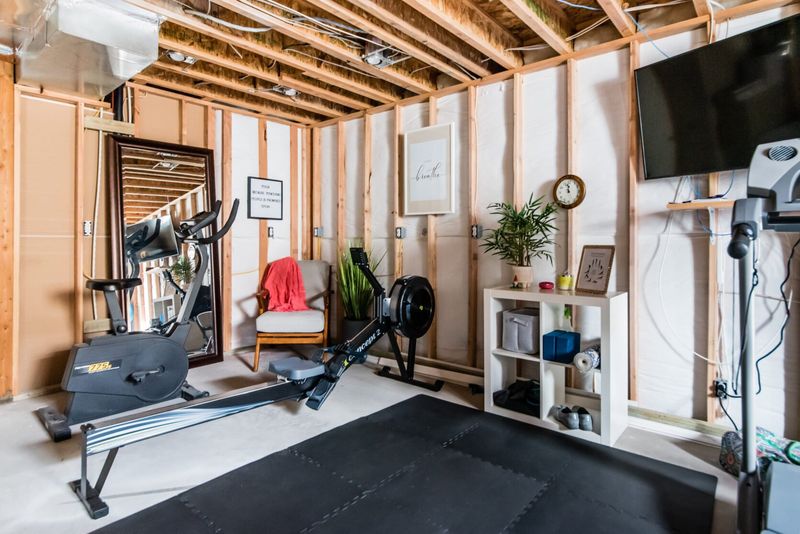
Home gyms often house equipment that hasn’t been touched in years. These unused machines take up space without offering any benefit.
Evaluating whether they’ll be used again or if it’s time to sell or donate can open up valuable real estate in the home. This decision allows room for more engaging activities and hobbies.
I advise you let go of unused gym equipment, and focus on what truly benefits our health and happiness.
18. Expired makeup

Makeup seems to last forever, yet it’s often forgotten long after its expiration date. These products can become clutter and may even pose a health risk if used.
Clearing them out frees up space and allows for a fresh start. This process also highlights the essentials, focusing on products that truly enhance our appearance.
By keeping only what’s current, we enjoy a more streamlined and hygienic beauty routine. It’s about focusing on quality and health rather than holding onto the past.
19. Outdated photo frames
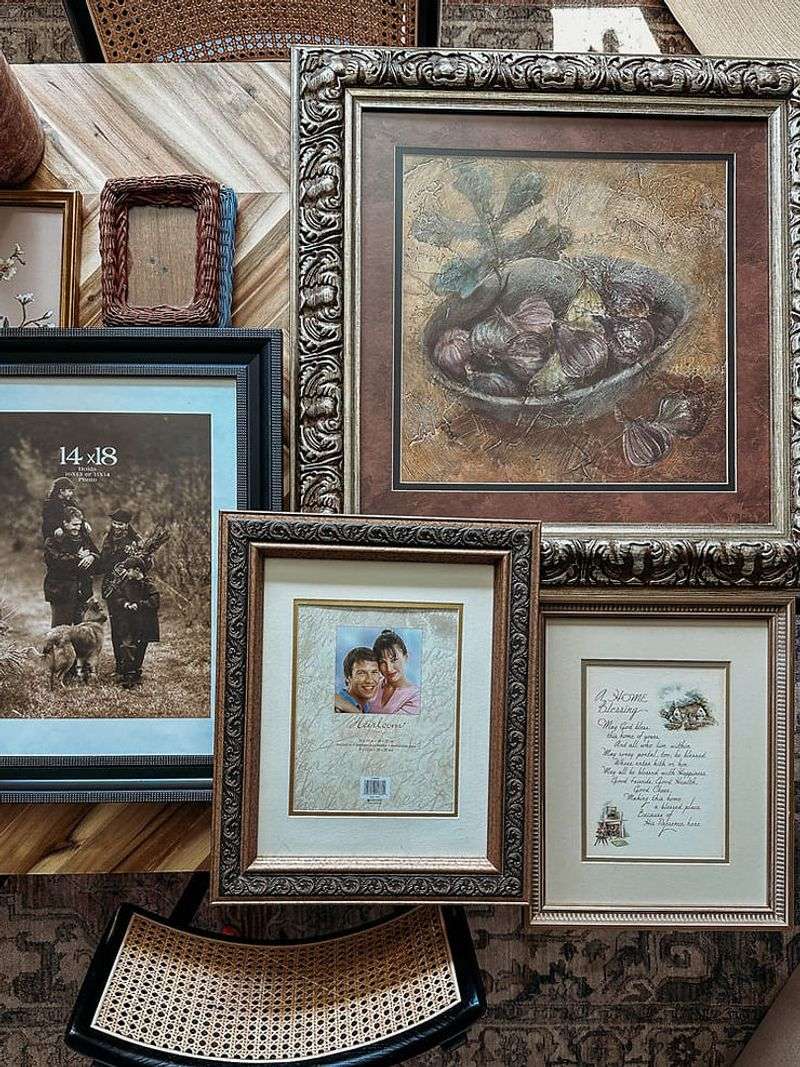
These can clutter mantels and shelves, detracting from the overall decor. Replacing them with more contemporary or cohesive frames can refresh the appearance of a room.
Additionally, digital photo frames offer a modern alternative that saves space and showcases a multitude of pictures.
The goal is to enhance the display of cherished moments while maintaining an updated and harmonious home environment.
20. Excessive plastic bags
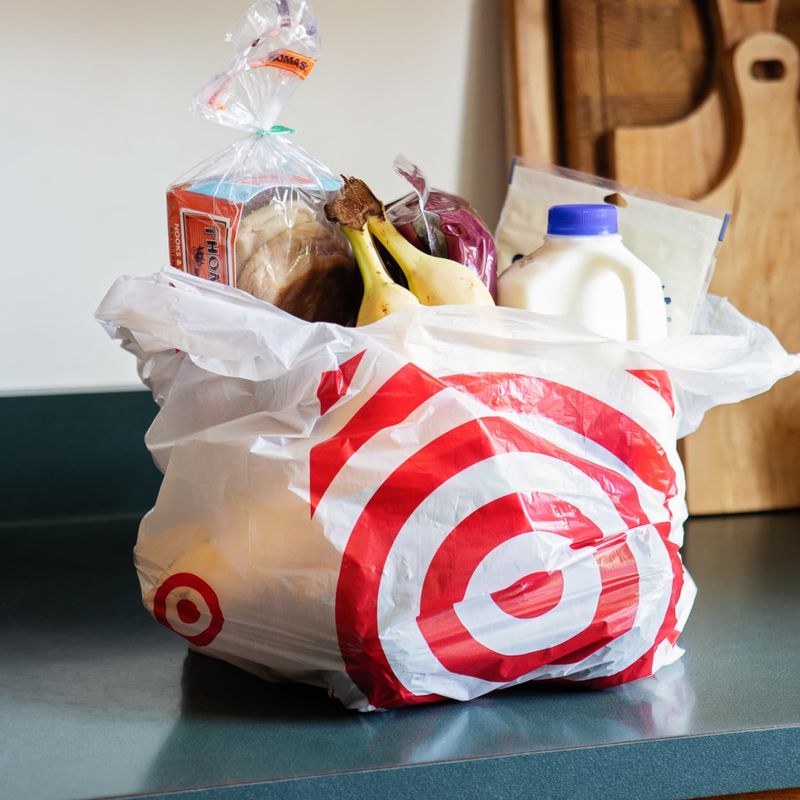
These excess bags can quickly take over valuable kitchen storage space. Finding ways to reduce and reuse them, or switching to reusable bags, can alleviate the clutter.
This action contributes to a more organized kitchen and an environmentally-friendly lifestyle. By keeping only a manageable amount, we simplify our storage solutions and embrace more sustainable practices.
21. Old pens and markers
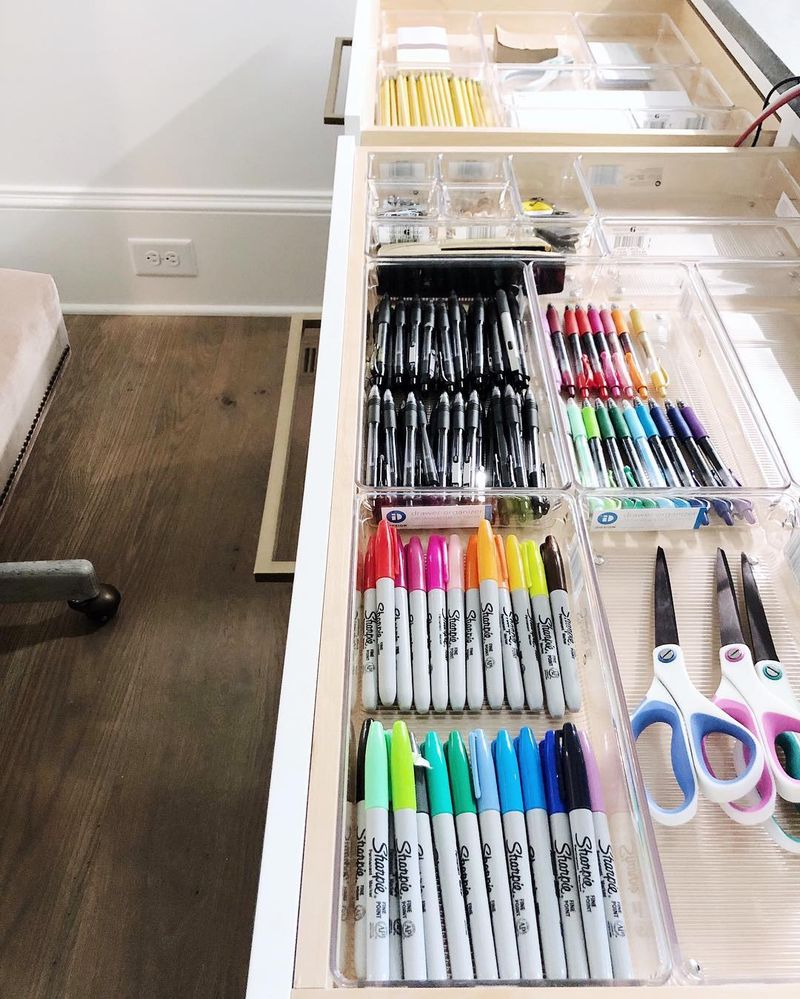
These writing instruments, some dried out or unused, clutter drawers and desks. Sorting through them and keeping only the functional ones creates a more efficient workspace.
This task can reveal hidden treasures and streamline our writing tool collection. An organized desk is more inspiring and conducive to productivity. It’s about eliminating the unnecessary and keeping only what’s useful.
22. Unnecessary holiday decorations
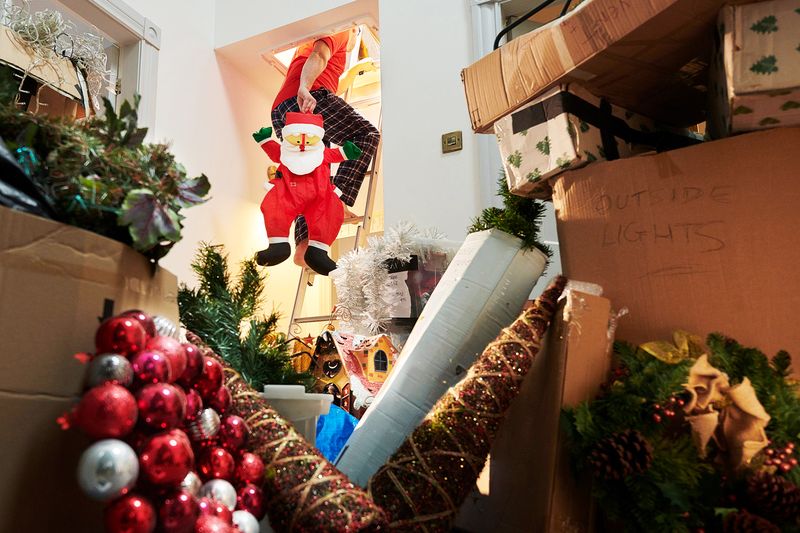
Holidays come and go, yet decorations often linger longer than they should. Those outdated or unused items take up attic or basement space.
Sorting through them and donating or discarding what’s no longer loved can make future decorating more enjoyable. This process encourages us to focus on the pieces that truly bring joy and celebrate the season.
23. Old furniture
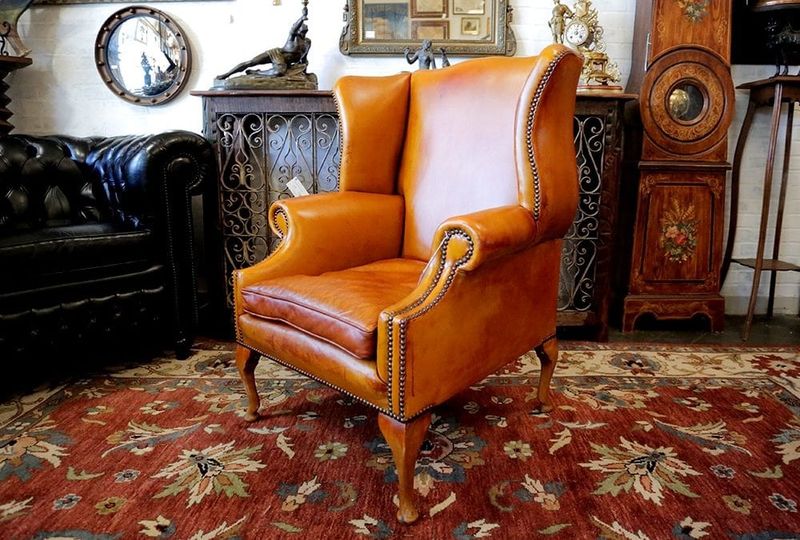
Furniture pieces often outlive their usefulness, becoming more of a burden than a benefit. These old items take up space and may not align with current decor styles.
Deciding whether to restore or replace them opens up possibilities for updating living spaces. This act of letting go brings freshness and modernity to the home.
By choosing pieces that reflect our current taste and lifestyle, we create an environment that feels personal and inviting.
24. Excessive tupperware

Tupperware seems to breed in kitchen cupboards, leading to an overwhelmed storage situation. These containers, often missing lids or rarely used, take up valuable space.
Sorting through them and keeping only the essentials can streamline the kitchen’s organization. This action makes meal prep more efficient and enjoyable.
By focusing on quality over quantity, we simplify our storage needs and embrace a more ordered kitchen environment.
25. Unused craft supplies
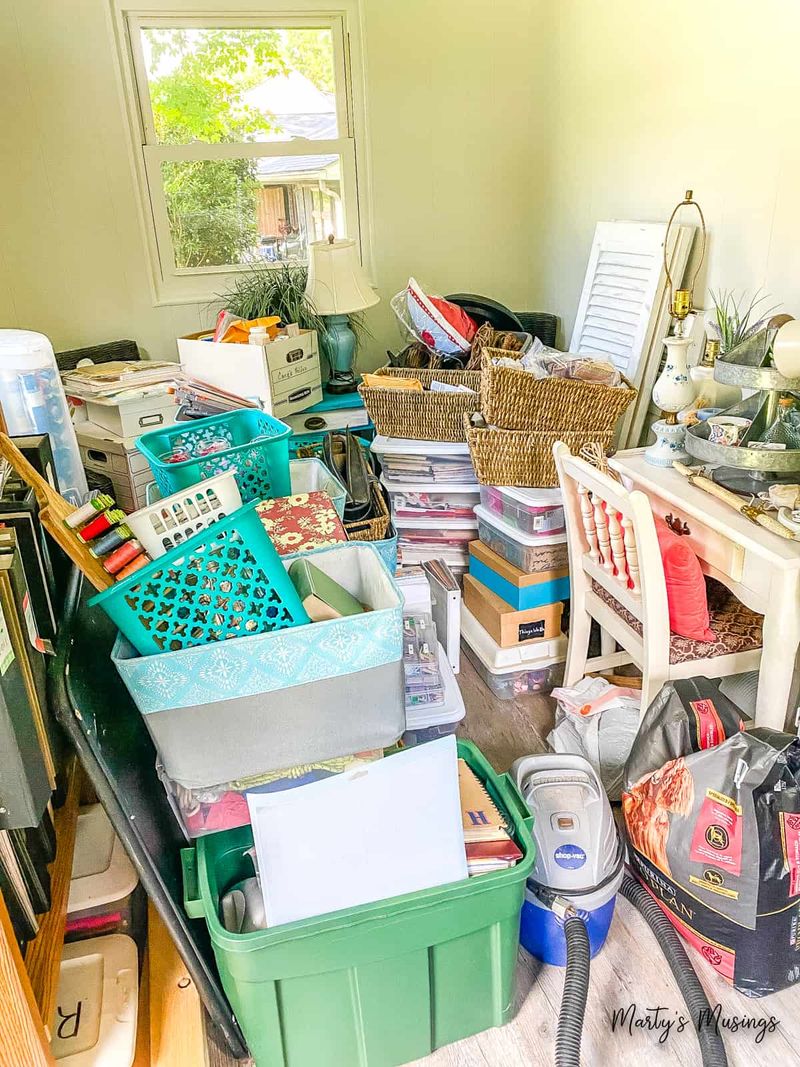
Craft supplies often inspire creativity, yet not all deserve a permanent place. Those unused materials take up space that could be used for current projects.
Evaluating what’s truly needed for ongoing hobbies and donating the rest can revitalize a creative space. This process also encourages new projects and exploration.
You should let go of what’s no longer useful, and that way make room for inspiration and new artistic endeavors.
26. Stale spices
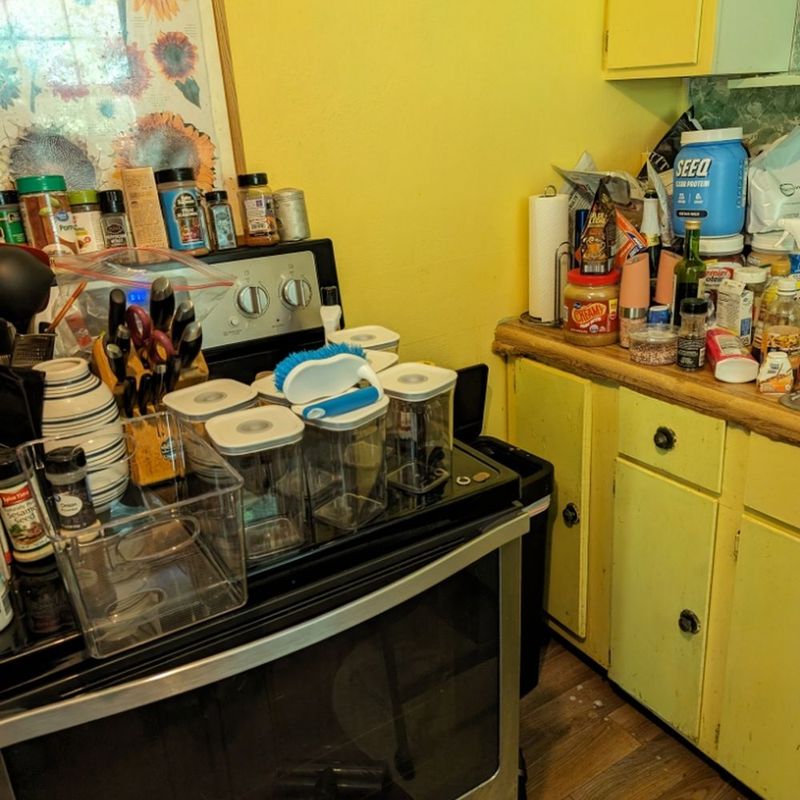
Spice racks often become graveyards for flavors past their prime. These stale spices take up pantry space without adding to culinary creations.
Clearing them out and replacing with fresh, aromatic options can invigorate cooking experiences. This task encourages us to explore new flavors and dishes.
A well-organized spice collection means more enjoyable meal preparation and dining. It’s about savoring the new while letting go of the old.
27. Old batteries
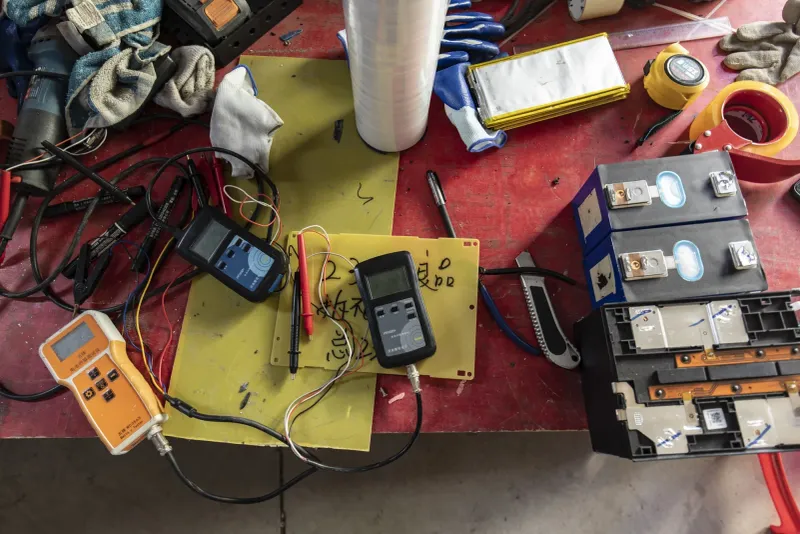
Batteries often linger in drawers until they’ve lost their charge and purpose. These old energy sources take up space and can be environmentally hazardous if not disposed properly.
Sorting and recycling them not only clears clutter but also ensures a safer home environment. This action reflects a commitment to responsible consumption and sustainability.
28. Worn-out towels
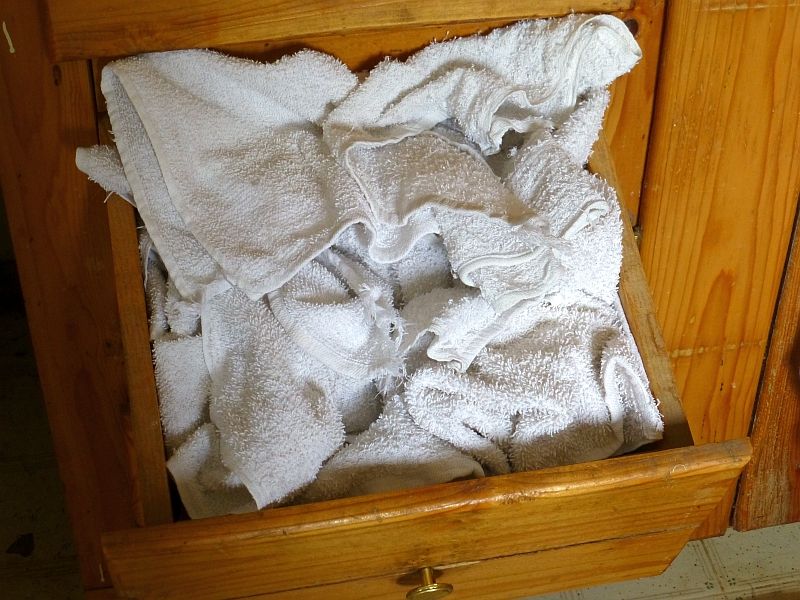
Towels wear thin over time, losing their absorbency and comfort. These worn-out linens often occupy precious storage space without serving their purpose.
Donating them for reuse or recycling gives way to plush and functional alternatives. This change enhances the bathroom’s aesthetic and provides a more enjoyable experience.
A well-stocked linen closet filled with quality towels means comfort and convenience, reflecting a mindful approach to home essentials.
29. Broken or mismatched dishes
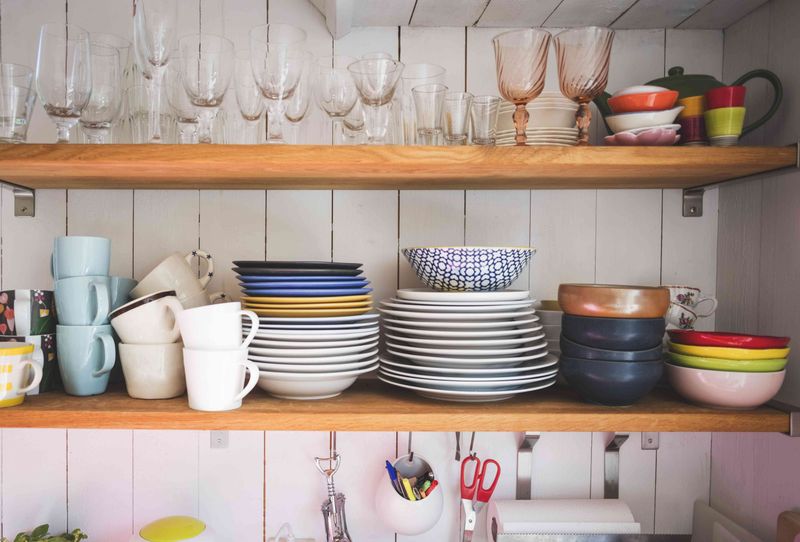
Dishes that no longer form complete sets often contribute to kitchen chaos. These broken or mismatched pieces take up cabinet space without adding value.
Sorting through them and deciding what to keep or discard can lead to a more harmonious kitchen. This process allows us to curate a collection of tableware that reflects our style and needs.
With a more organized kitchen, meal times become more pleasant and efficient.


